Pride of Madiera
Pride of Madiera is the Common name given to the Echium fatuosum, and as the name suggests, it is native to the Island of Madiera. This is a large perennial plant with rough , raspy textured leaves, and large blue flowers spikes in Spring to early Summer.
There are a number of varieties of Echium, and they are all spectacular when in flower, adding a distinct shape in a garden which contrasts to other plants. The plants grow to around 2.5 metres tall, and around 2 metres wide, and are drought tolerant once established. The best climate for these is temperate to warm, preferably with low humidity, although Sydney can be quite humid in Summer, and these plants still look good. Plant them in a position with full sun and well drained soil. Prune off old flower heads and leggy stems to keep the plant compact. They grow fast, so they will look good again in no time.
I took these photos in gardens close to Sydney Harbour. 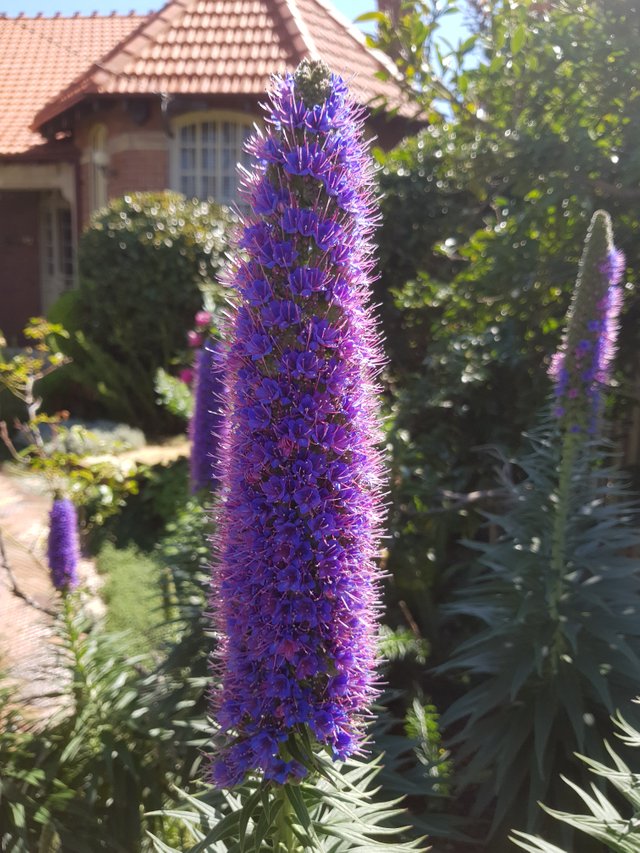
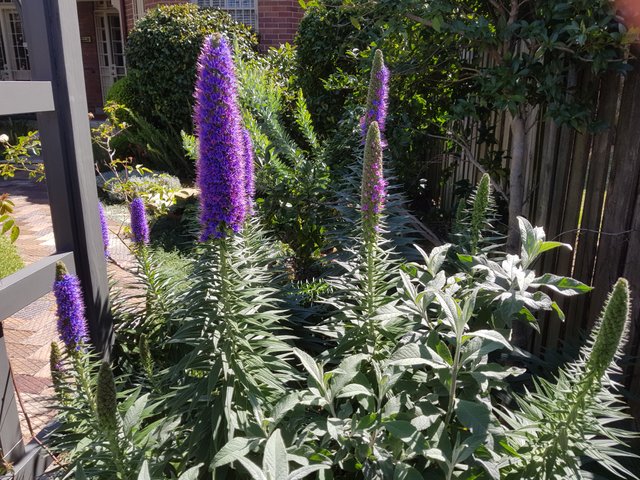
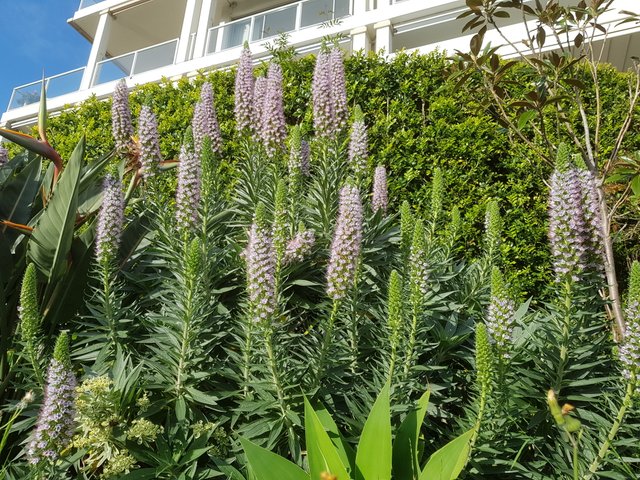
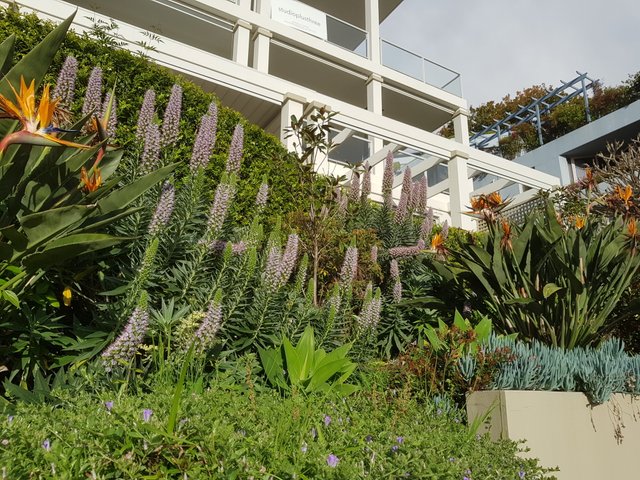
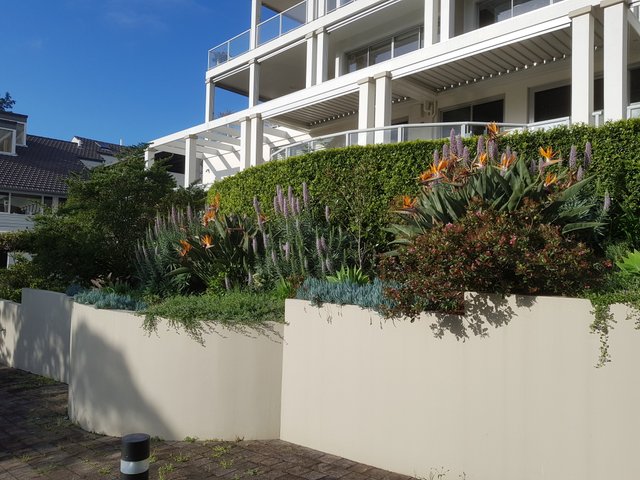
A very beautiful plant. I fell in love with it. It really is the pride of all the representatives of this family. Pride of Madeira. This delightful and hardy perennial produces large spires of sapphire blue to violet flowers with crimson stamens in spring and summer. Best grown in the ground and

great in cottage gardens or in mixed borders. Grows well in coastal areas and is great for bees.
Thank you for the wonderful plants.
https://inlandvalleygardenplanner.org/plants/page/15/
Fav. comment Award ! Nice choice of Pics, well done.
Madeira's pride is a beautiful and amazing plant. This is truly dramatic with spectacular high flower spikes.
This beautiful plant needs one season for flower germination so it will flower in the first year and so on.
After the flower is formed, Madeira's pride will produce its own seeds productively. Unless we have winter, we will never plant again because we will always have lots of seeds.
In the first year, Madeira's pride will grow by about one meter and in the second year will produce fantastic flowers.
Absolutely spectacular!
Source
Fav. comment Award ! Excellent Pics, thanks.
We love that this old classic is coming back in popular demand. The Pride of Madeira is an excellent prolific flowering plant with gorgeous and tall purple flowers.If you’re looking for a low maintenance flowering plant with maximum impact, this plant might be just what you’re after. It’s a perennial and grows excellently in Australian coastal areas, requiring minimal watering and care.
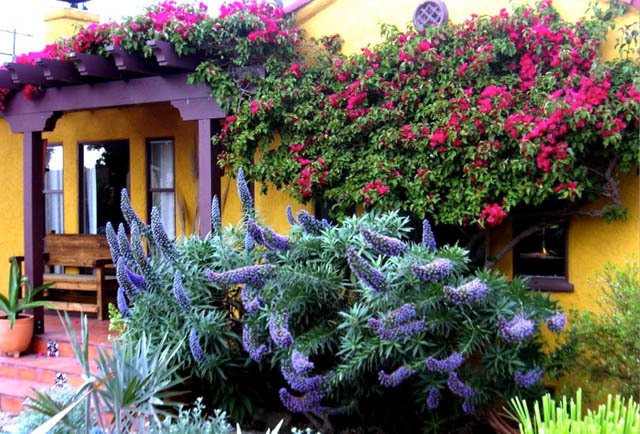
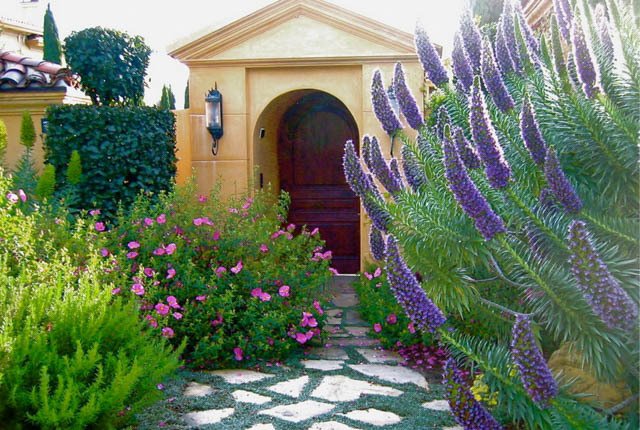
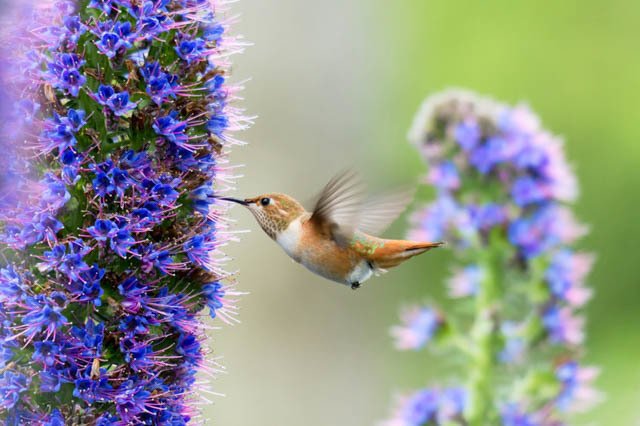 .
.
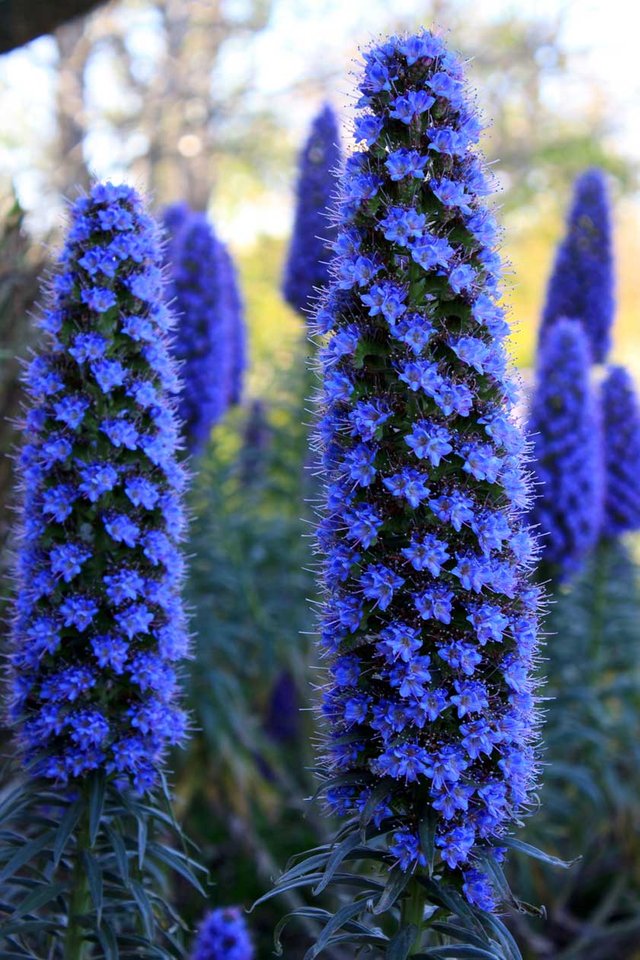
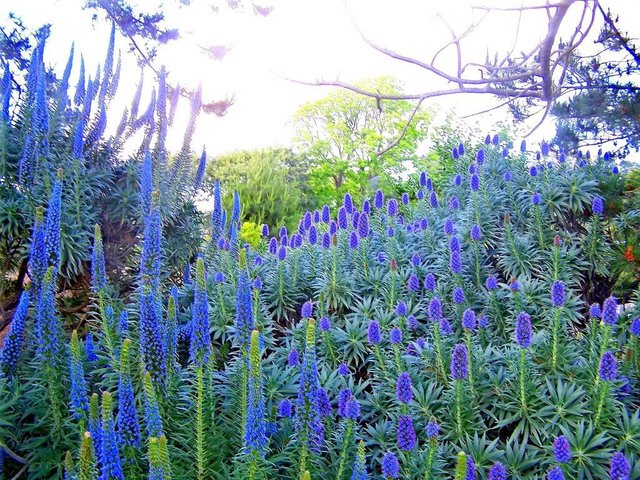
Reaching a maximum of about 3 metres tall and 2 meters wide, the Echium Candicans grows best in full sun. Soil should be well drained and not too rich or moist. For care, once flowering has finished prune off the flower spikes. This will encourage growth of more branches for next.
 - A rapidly growing evergreen shrub to 4 to 6 feet or more tall or more by as wide with long, narrow, gray-green leaves held at the ends of the branches. Rising above the foliage in spring on into early summer are the large 20 inch long flower stalks bearing small bluish-purple flowers with reddish stamens. Plant in full sun in most any type of soil and irrigate occasionally to not at all. Once established plants require no additional irrigation in coastal gardens though inland plantings will appreciate occasional irrigation and protection from cold - reliably cold hardy for short durations down to about 25 degrees F and some claim a bit colder. This is a great plant for mild coastal climates and seaside gardens on a slope or in an area with room to spread out and it is attractive to honey bees, hummingbirds and butterflies, but unpalatable to deer and other browsers. Pride of Madeira often reseeds itself in the garden and, as this plant is relatively short lived (generally 4-6 years but some living up to 10 years), allow seedlings to replace older woodier plants. Prune flower inflorescences off after flowering to tidy up the plant and cut back hard in late fall to reduce size and encourage new growth from lower branches - leaves have slightly irritating hairs so remember to wear gloves when handling.
https://www.smgrowers.com/products/plants/plantdisplay.asp?plant_id=543
Twelve inch spikes of countless purple-blue flowers open on strong branching stems in spring and summer, although very few good seeds are often produced. This really is a perennial in a sheltered situation, e.g. in a large pot or a very protected garden. In The Scilly Islands and the South West of the UK this plant often makes a long-lived small tree.
Seeds are best sown in spring or before mid summer to enable a full season of growth and are best sown where actually needed, preferably in a well-drained and sheltered spot. Otherwise, sow seeds, covering very thinly, in early spring onto a good soil-based compost in a frost-free place. No artificial heat is needed to help germinate these seeds, just a cool, varying, background temperature, in good light. Seedlings usually appear in 3 to 4 weeks. Pot on into a gritty compost containing very little organic material before planting out as small plants in a well-drained sheltered spot, or a large container that may be taken in during the winter in severe frost. Plants usually flower 24 months after sowing and can occasionally vary in habit and flower colour as we have numerous species growing here, and very many busy bees.
https://www.plant-world-seeds.com/store/view_seed_item/447
@ctrl-alt-nwo,
Wow it's beautiful! Uncommon in Sri Lanka! Actually I never see this plant and flower here! It seems to be a good plant for gardening and your photography has proven it! Thank you for sharing such great photography and description about "Pride of Madiera"!
Cheers~
Beautiful plant, my friend, a truly dramatic garden plant, a close relative of borage, it produces the most spectacular tall flower spikes seemingly from nowhere in summer. Despite it's common name of 'Pride of Madeira', it is hardy in the UK down to -5C or so, particularly where it is drier in winter. It is biennial, so needs one cold winter after germination to flower - so these plants will flower in their first year and beyond.
Once your echium has established and flowered, it will self-seed prolifically and, unless we have a really harsh winter, you will never have to plant another as you will always have plenty of seedlings!
E. candicans will grow to around 1m (3ft) in its first year, then in its second, it produces its magnificent flower - in milder areas the plants keep growing all year around and, after a frost-free winter, you will see enormous flower spikes. Plants are not frost hardy, and the leaves are easily blackened by cold winds so protect seedlings and one-year old plants if frost threatens.
A common sight in Cornwall as well, Echiums are best grown in very well drained soils, or in large pots with plenty of sand or grit for drainage. When it does grow in spring, keep it well watered between May and August as it grows quickly.
Echiums self-seed over a small area, and once these seedlings have germinated and over-wintered, they too may flower away, and a little colony will appear. Truly spectacular and one of the best plants that you can grow to attract pollinating insects into your garden.
Thank you @ctrl-alt-nwo
A source of information: https://www.yougarden.com/item-p-680023/pride-of-madeira-echium-candicans
Thanks again for sharing some great photos.
Shared on twitter promoting #Steemit.
Have a great weekend.
Stephen
Pride of Madiera. #STEEM #steemtalent #JoinSteemit #Steemit
#garden #gardening #gardensworld #plant #life #blog #blogger #australia #photography #photographer
https://twitter.com/StephenPKendal/status/105583062024765440
A truly dramatic garden plant, a close relative of borage, it produces the most spectacular tall flower spikes seemingly from nowhere in summer. Despite it's common name of 'Pride of Madeira', it is hardy in the UK down to -5C or so, particularly where it is drier in winter. It is biennial, so needs one cold winter after germination to flower - so these plants will flower in their first year and beyond.
E. candicans will grow to around 1m (3ft) in its first year, then in its second, it produces its magnificent flower - in milder areas the plants keep growing all year around and, after a frost-free winter, you will see enormous flower spikes. Plants are not frost hardy, and the leaves are easily blackened by cold winds so protect seedlings and one-year old plants if frost threatens.
A common sight in Cornwall as well, Echiums are best grown in very well drained soils, or in large pots with plenty of sand or grit for drainage. When it does grow in spring, keep it well watered between May and August as it grows quickly.
Echiums self-seed over a small area, and once these seedlings have germinated and over-wintered, they too may flower away, and a little colony will appear. Truly spectacular and one of the best plants that you can grow to attract pollinating insects into your garden.
Source
An exotic shrub. That should be any oxymoron. How could something as exotic and beautiful as this be described as something as dull as 'a shrub'? This can. No alternative. It's woody and the trunk and branches tend to create the most wonderful shapes under its canopy of floppy glaucous leaves and in early spring starts producing it's crowd of perpendicular electric blue flower spikes. Fully out in April. The plant might reach 6ft or more (still doesn't qualify as a tree) and 6ft across and the flowers about 1ft tall. If you have a garden mild enough for this (within 200 metres of the beech or Central London), one of its many engaging traits is its tendency to produce the flowers even in the depths of winter. A harbinger of spring, a nice reminder that winter won't last forever. It's just before Christmas as I write and the plants at the nursery (in the unheated greenhouse) are already making it obvious where they're going to flower.
It needs plenty of light, good ventilation and a reasonably well drained soil. If you can give it winter protection (a shed or greenhouse), try it in a pot but make it as big as you can manage. They grow quite fast but don't live particular long (10 years?). A roof garden in Central London... The main one pictured is in Linda's garden in Felpham - 100 yards from the beach. Linda is our Niwaki expert.
Source: http://architecturalplants.com/plants/id/echium-fastuosum